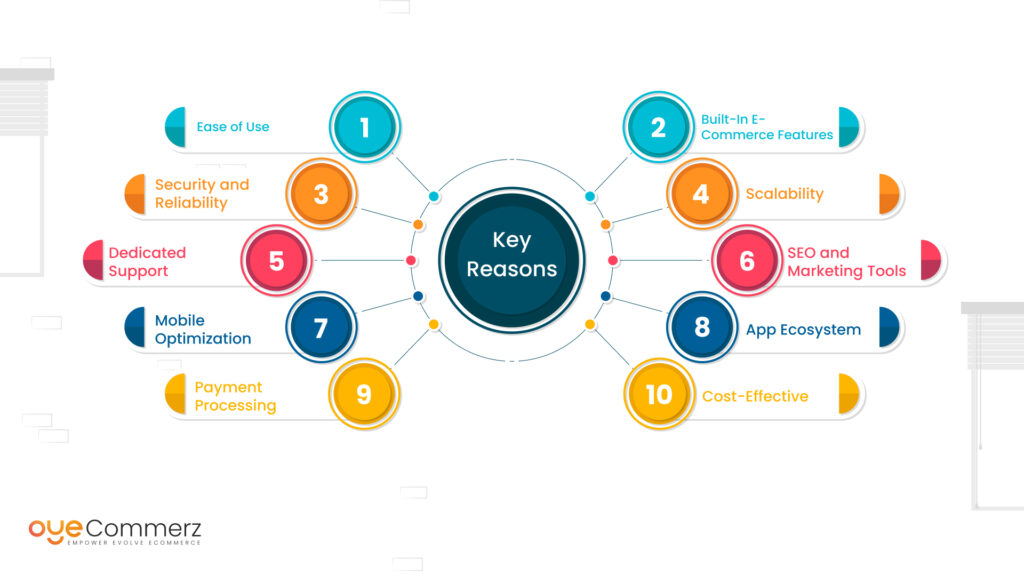Shifting from WP to Shopify marks an promising step in streamlining your e-commerce operations. As companies grow, choosing a platform that supports scalability, user experience, and customization becomes crucial. Shopify has emerged as a favorite for online merchants, offering unmatched adaptability, security, and user-friendliness. In this guide, we will delve into the transformative impact of this migration, discuss the advantages, and share practical tips to ensure a smooth move.
1. Why Switch from WordPress to Shopify?
WordPress, paired with WooCommerce, continues to support countless e-commerce platforms. However, as businesses scale, challenges like plugin dependency, security vulnerabilities, and technical complexities often obstruct growth. Shopify, specifically created for digital retail, eliminates these concerns with an all-in-one, intuitive platform. Real data back this shift—Shopify hosts over 4.4 million websites worldwide, with a documented 10% increase in sales conversion rates for numerous merchants after migration.
2. Shopify's Advantages for Thriving Online Stores
Shopify’s powerful platform caters for expanding businesses. Its notable benefits are:
- Effortless Design Flexibility: Shopify provides over 80 expertly crafted themes.
- Built-in Features: Capabilities such as Shopify Payments and integrated SEO streamline operations.
- International Expansion: Currency versatility and regional customization enable businesses to expand internationally.
Additionally, Shopify delivers an availability percentage of 99.98%, guaranteeing your website remains accessible.
3. Preparing for WP to Shopify Migration
Before migrating, assess your existing setup. Review inventory details, client information, and search engine rankings. Tools like Shopify’s Migration Kit or third-party solutions help ease the transition. Create a comprehensive plan, making sure all resources—item details, images, and blog content—are ready for seamless import.
4. The Importance of Accurate Data Migration
Transferring your data is a cornerstone of a smooth transition. When migrating from WP to Shopify, focus on:
- Inventory Details: SKU, item summaries, and groupings.
- Client Information: Emails, order history, and preferences.
- SEO Optimization: Preserve meta tags, URLs, and forwarding paths to maintain search rankings.
Leverage tools such as LitExtension to facilitate seamless migration while minimizing errors.
5. Tailoring Your Shopify Store to Fit Your Brand
Post-migration, customizing your Shopify store helps it reflects your business identity. Utilize Shopify’s drag-and-drop editor to create layouts with ease. Shopify's themes are mobile-responsive, ensuring a smooth user experience across devices—a critical factor, since 74% of e-commerce traffic is generated by mobile users.
6. Maintaining SEO During Migration
Search engine optimization is crucial for preserving your online presence during migration. Shopify is highly optimized for search Shopify migration experts engines with clean URL structures, built-in optimization tools, and seamless blog integration. Make sure you:
- Implement 301 redirects for old URLs.
- Optimize new pages with keyword-rich content.
- Leverage plugins like Plug in SEO to monitor performance after the switch.
7. Post-Migration Testing
Once the migration is complete, run detailed checks.
Check: - Page load times (Shopify delivers faster speeds in contrast with WP).
- Payment integration reliability and checkout processes.
- Adaptability across devices.
Quality assurance ensures your store delivers a smooth shopping experience from the start.
8. Case Study of a Successful Migration
One such migration success story is Gymshark, a E-commerce re-platforming fitness apparel brand that moved to Shopify. Post-migration, the company experienced a 60% boost in mobile sales and significantly lowered site downtime. This highlights the capabilities of Shopify in enhancing e-commerce growth.
9. Overcoming Common Migration Issues
Migration comes with challenges, such as information accuracy and adjusting tailored features. However, Shopify’s robust support and third-party experts make overcoming these hurdles manageable. Partnering with experienced Shopify developers ensures a smooth transition.
10. Making the Switch: The First Step Toward Success
Switching from WordPress to Shopify marks a strategic approach to e-commerce. By addressing scalability, streamlining operations, and improving buyer satisfaction, Shopify empowers businesses to thrive in competitive markets.
Conclusion
Transitioning from WP to Shopify offers a smart solution that can greatly enhance your online business performance. With a robust migration plan, the appropriate resources, and professional guidance, you can unlock new growth opportunities.
Ready to make the leap? Reach out today to learn how our Shopify migration services can revolutionize your online store. Get in touch today, or consider: Is it time to seize Shopify’s advantages for your store?
